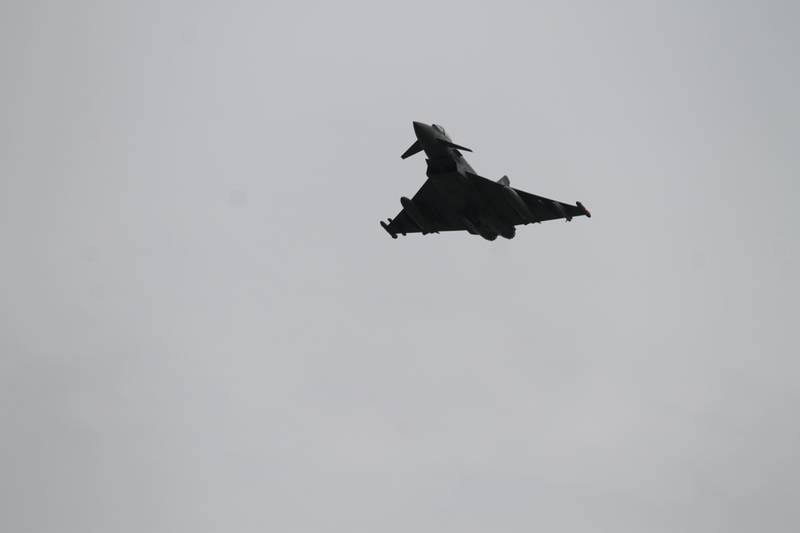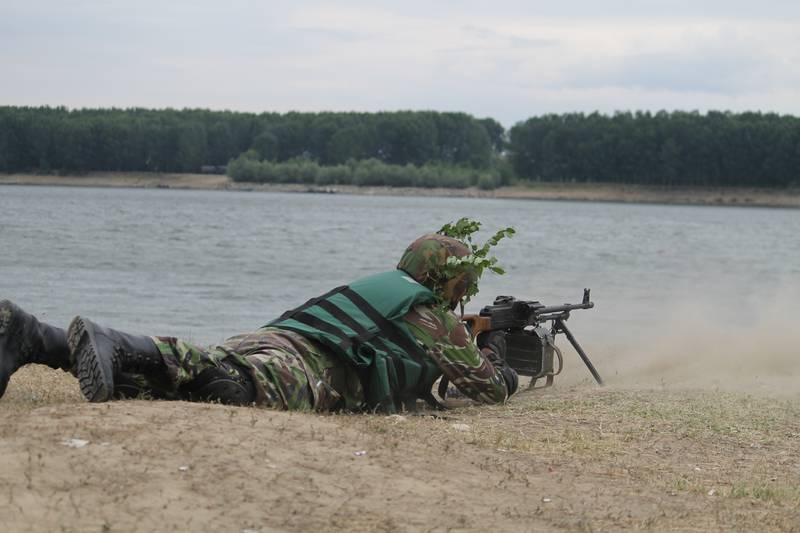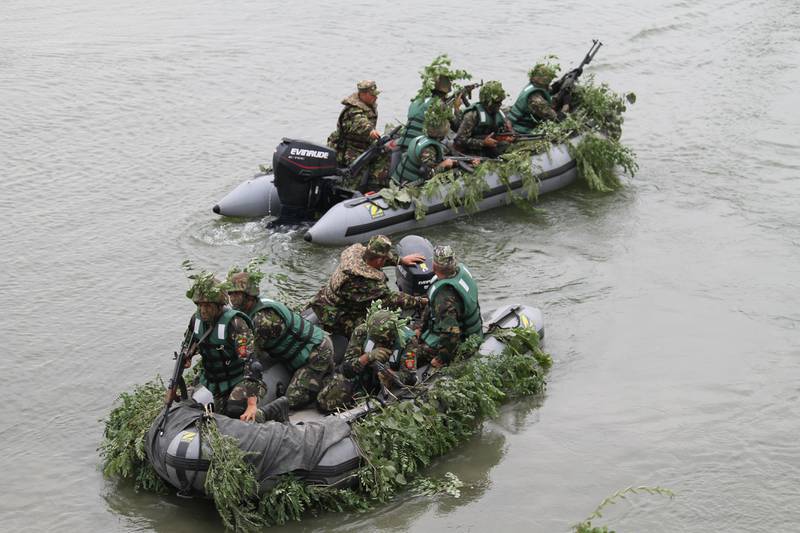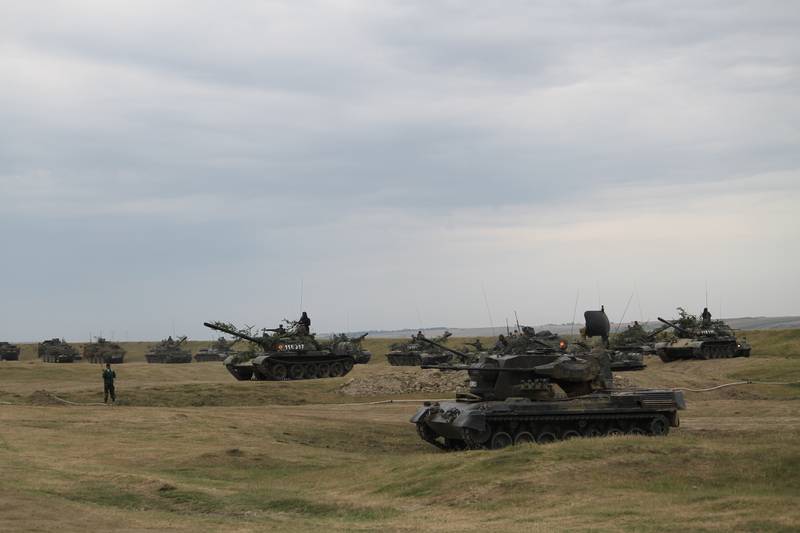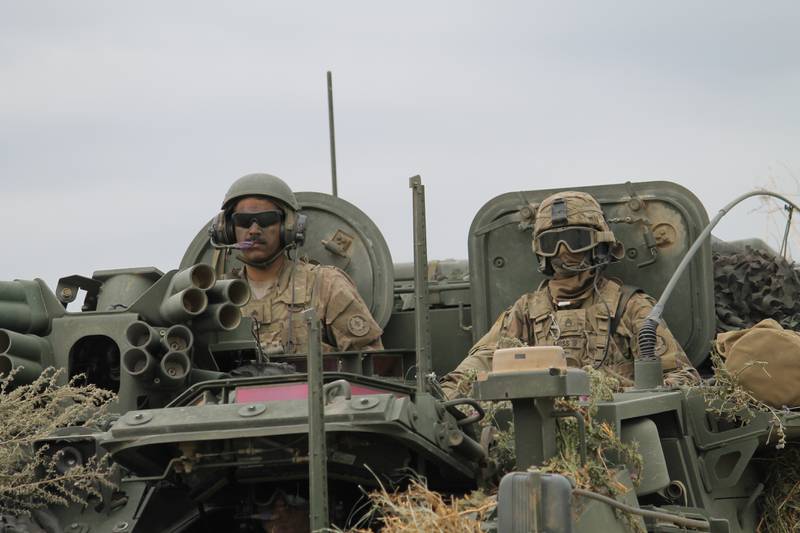Correction: Lt. Gen. Ben Hodges expressed ”more confidence“ in Black Sea countries.
BORDUSANI, Romania — The Romanian armed forces showed its capability to perform multidomain battle using naval, land and air power during a river crossing exercise on the Danube as part of the largest military exercise in the region this year.
The U.S.-led Saber Guardian exercise consists of over 25,000 service members from more than 20 allied and partner nations and took place across seven countries, including Romania and Bulgaria.
“In the Army, we talk about multidomain battle, and what you saw today was the Romanian forces executing multidomain battle,” U.S. Army Europe Commander Lt. Gen. Ben Hodges said following the exercise on the banks of the river. He noted after witnessing the exercise that he has “more confidence than I had before today” in the ability of Black Sea countries to carry out complex operations.
The U.S. Army is developing the multidomain battle concept as key to its future operations against near-peer adversaries like Russia, so it makes sense the U.S. Army and its allies would practice how to bring the concept to Europe, where countries are most threatened by the increasingly provocative country to its East.
Multidomain battle surfaced as a capstone concept in 2016, when U.S. Army Chief of Staff Gen. Mark Milley unveiled it at the Association of the U.S. Army’s annual show in Washington.
Since Russians invaded Ukraine and illegally annexed Crimea in 2014, the U.S. Army and its NATO allies have been working to ensure capabilities exist across Europe and particularly in Eastern Europe to defend against any new maneuvers by the Russians to take more land or threaten the stability of the region.
The Romanian military, over the course of less than two hours on July 16, showed it can seamlessly push off the enemy and build a defense in order to facilitate a river crossing of combat vehicles using capability across all domains.
Lt. Gen. Nicolae Ciuca, Romania’s chief of defense, told Defense News after the exercise, that Romania has “revitalized all of the equipment. We have also trained all of the leaders on how to plan and how to coordinate this operation.”
The Romanian general added, “I think [Hodges] was impressed by our river flotilla equipment. He did not have any knowledge of that.”
Hodges later told Defense News in an interview in Bulgaria, “The Romanian river crossing was such an impressive display of capability that, honestly, I didn’t know they had.”
“When you see Romanian Navy river ships, Danube flotilla, out there providing direct support and gun fire or SHORAD for the crossing site, I thought, ‘Wow, what a bright idea. Why didn’t I think of that?’” he said. “Because it never occurred to me that they’d have large enough craft like that that can move up and down the Danube river because that’s never been my thing to worry about. But now, big rivers in Europe, that is obviously a part of the environment.”
Before the start of the exercise on the Danube, Romanian naval vessels designed for the river — essentially a brown water Navy — were in position near the almost-complete pontoon float bridge built during the middle of the night.
The last piece of the bridge was saved for emplacing to show those observing the exercise how the bridge will come together but would have been finished under the cover of darkness using night vision capability, according to Col. Jeff Shoemaker, who leads training and exercise coordination for U.S. Army Europe.
Overnight, the near and far side of the river was secured using Romanian assault forces to push back the enemy forces to a range where friendly forces could not be hit by enemy machine gun or short-range artillery fire, Shoemaker said before the start of the exercise.
Romanian fighter jets to include F-16s flew over the river at the start of the event, providing close air support to the troops on the ground that had secured both sides of the river and to suppress fire for a round of paratroopers about to drop in. Romanian paratroopers then jumped into a landing zone on the opposite bank of the river to continue to prevent the enemy from regaining territory and to prepare for the crossing of combat forces on vehicles.
On the shores sat Gebhard short-range air defense systems providing cover for troops crossing the river and building the bridge. Naval vessels provided similar cover using both gunfire and short-range air defense capability.
The Romanians even included an electronic warfare element to degrade enemy command control and communications in the exercise and incorporated two medical evacuation procedures among several other activities to make the exercise increasingly intricate.
Throughout the exercise, light-assault vessels zipped across the river carrying troops; armored vehicles swam the river; and, once the last piece of the bridge was put in place, Romanian armored vehicles, its Gebhards and U.S. Strykers from the 2nd Cavalry Regiment crossed over.
Choosing the Danube for the exercise was also strategically relevant to the region.
“The Danube is like the Autobahn,” Hodges said. “It’s like the great highway for commerce for so many different nations.”
The river runs through many European countries, most of which are NATO countries, and feeds into the Black Sea, he added. “It’s a strategically important waterway ... probably the most strategically important waterway certainly in Europe.”
Part of the reason Romanians are concerned about what Russia has done in the Black Sea and Crimea, Hodges said, “is you start getting closer and closer to the Danube river delta, and then you start affecting potential security and commercial impact on the Danube river, which is obviously vital for Romania and Bulgaria.”
The exercise directly shows how the Romanians and allied nations would be able to address the protection of the vital waterway should its security be threatened using an all-encompassing strategy, leaders at the exercise emphasized.

Jen Judson is an award-winning journalist covering land warfare for Defense News. She has also worked for Politico and Inside Defense. She holds a Master of Science degree in journalism from Boston University and a Bachelor of Arts degree from Kenyon College.



